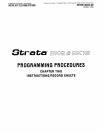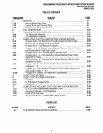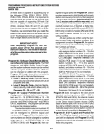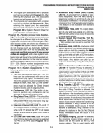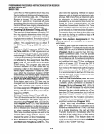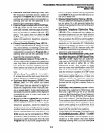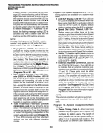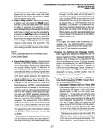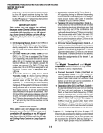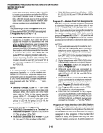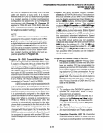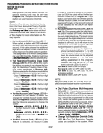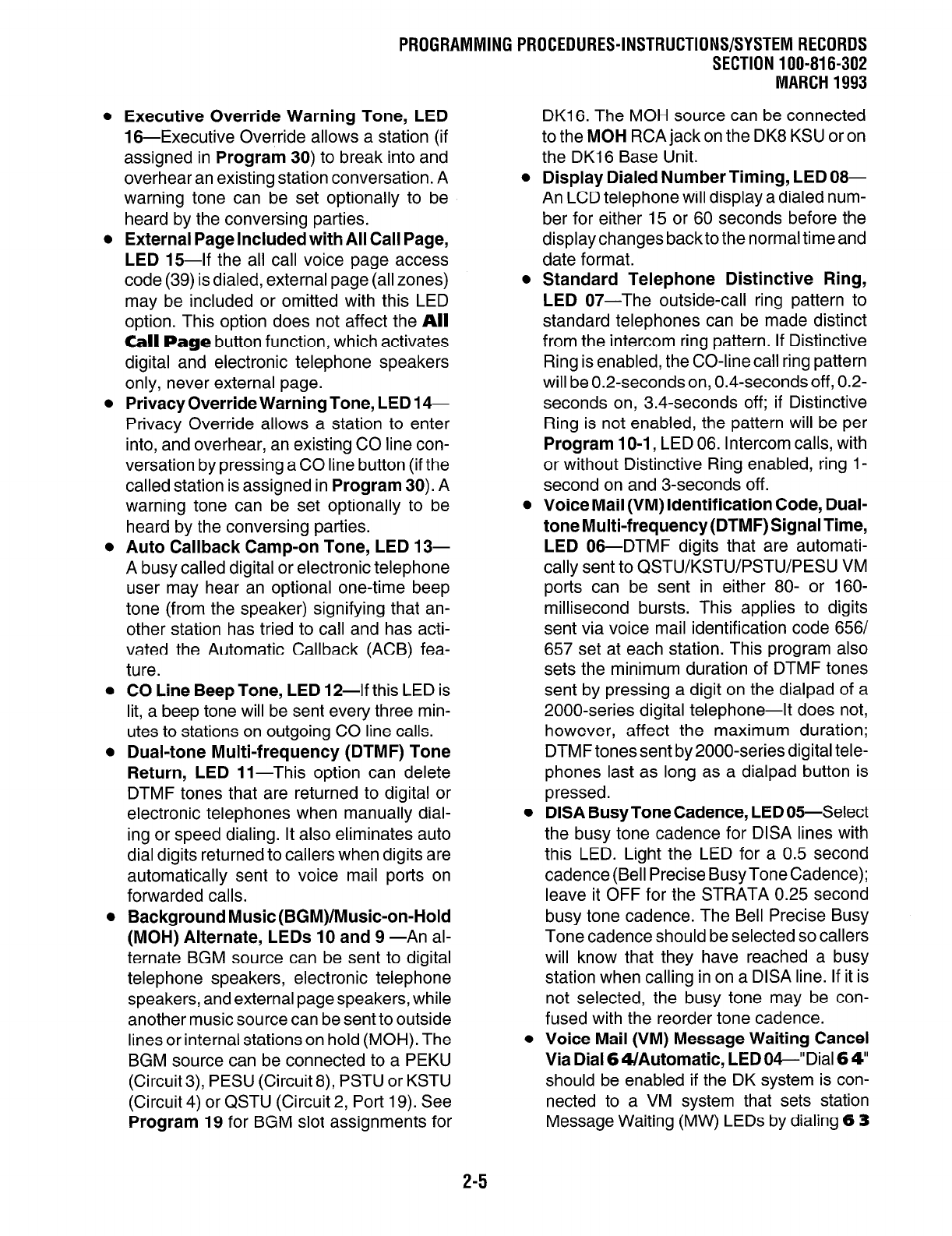
l
Executive Override Warning Tone, LED
16-Executive Override allows a station (if
assigned in Program 30) to break into and
overhear an existing station conversation. A
warning tone can be set optionally to be
heard by the conversing parties.
l
External Page Included with All Call Page,
LED 15-If the all call voice page access
code (39) is dialed, external page (all zones)
may be included or omitted with this LED
option. This option does not affect the
All
Call Page button function, which activates
digital and electronic telephone speakers
only, never external page.
l
Privacy Override Warning Tone, LED 14-
Privacy Override allows a station to enter
into, and overhear, an existing CO line con-
versation by pressing a CO line button (if the
called station is assigned in Program 30). A
warning tone can be set optionally to be
heard by the conversing parties.
l
Auto Callback Camp-on Tone, LED 13-
A busy called digital or electronic telephone
user may hear an optional one-time beep
tone (from the speaker) signifying that an-
other station has tried to call and has acti-
vated the Automatic Callback (ACB) fea-
ture.
l
CO Line Beep Tone, LED 12-If this LED is
lit, a beep tone will be sent every three min-
utes to stations on outgoing CO line calls.
l
Dual-tone Multi-frequency (DTMF) Tone
Return, LED II-This option can delete
DTMF tones that are returned to digital or
electronic telephones when manually dial-
ing or speed dialing. It also eliminates auto
dial digits returned to callers when digits are
automatically sent to voice mail ports on
forwarded calls.
l
Background Music (BGM)/Music-on-Hold
(MOH) Alternate, LEDs 10 and 9 -An al-
ternate BGM source can be sent to digital
telephone speakers, electronic telephone
speakers, and external page speakers, while
another music source can be sent to outside
lines or internal stations on hold (MOH). The
BGM source can be connected to a PEKU
(Circuit 3), PESU (Circuit 8), PSTU or KSTU
(Circuit 4) or QSTU (Circuit 2, Port 19). See
Program 19 for BGM slot assignments for
2-5
SECTION 100-816-302
MARCH 1993
DK16. The MOH source can be connected
to the MOH RCA jack on the DK8 KSU or on
the DK16 Base Unit.
l
Display Dialed Number Timing, LED 08-
An LCD telephone will display a dialed num-
ber for either 15 or 60 seconds before the
display changes back to the normal time and
date format.
l
Standard Telephone Distinctive Ring,
LED 07-The outside-call ring pattern to
standard telephones can be made distinct
from the intercom ring pattern. If Distinctive
Ring is enabled, the CO-line call ring pattern
will be 0.2-secondson, 0.4~seconds off, 0.2-
seconds on, 3.4-seconds off; if Distinctive
Ring is not enabled, the pattern will be per
Program 1 O-l, LED 06. Intercom calls, with
or without Distinctive Ring enabled, ring l-
second on and 3-seconds off.
l
Voice Mail (VM) Identification Code, Dual-
tone Multi-frequency (DTMF) Signal Time,
LED 06-DTMF digits that are automati-
cally sent to QSTU/KSTU/PSTU/PESU VM
ports can be sent in either 80- or 160-
millisecond bursts. This applies to digits
sent via voice mail identification code 656/
657 set at each station. This program also
sets the minimum duration of DTMF tones
sent by pressing a digit on the dialpad of a
2000-series digital telephone-It does not,
however, affect the maximum duration;
DTMF tones sent by 2000-series digital tele-
phones last as long as a dialpad button is
pressed.
l
DISA Busy Tone Cadence, LED05-Select
the busy tone cadence for DISA lines with
this LED. Light the LED for a 0.5 second
cadence (Bell Precise Busy Tone Cadence);
leave it OFF for the STRATA 0.25 second
busy tone cadence. The Bell Precise Busy
Tone cadence should be selected so callers
will know that they have reached a busy
station when calling in on a DISA line. If it is
not selected, the busy tone may be con-
fused with the reorder tone cadence.
l
Voice Mail (VM) Message Waiting Cancel
Via Dial 6 4/Automatic, LED 04-“Dial6 4”
should be enabled if the DK system is con-
nected to a VM system that sets station
Message Waiting (MW) LEDs by dialing 6 3



